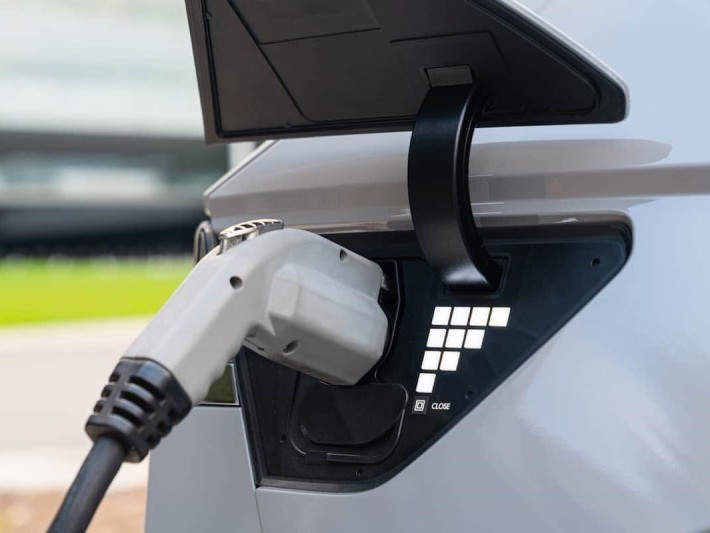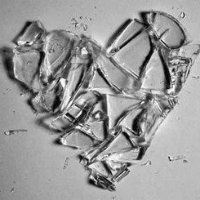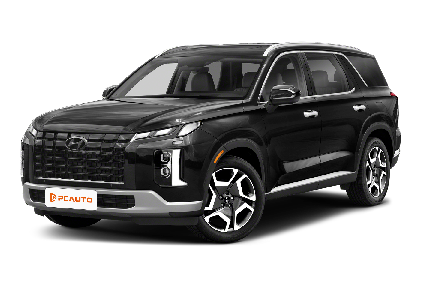Q
Which car has the most recalls in 2023?
Ford took the unwanted crown for the most global recalls in 2023, with multiple models called back repeatedly for a variety of issues. The problems mainly centered on electronic systems, fuel pumps, and airbags, with the F-150 pickup and Bronco SUV leading the charge in terms of recall frequency.
Over in Malaysia, while Ford's recall activity has been relatively lighter, owners shouldn't hit the snooze button. Keep an eye out for official recall notices and don't delay in reaching out to authorized service centers for those free fixes – safety first, always.
Let's be clear: recalls are a sign manufacturers are taking responsibility. They're about proactively finding and fixing potential glitches to make your ride safer. Malaysian owners can check for recall info through the JPJ website or the brand's official site.
Now, a quick reality check: recall frequency varies by brand, and it's often tied to things like model complexity, how tech-heavy the vehicles are, and sales volume. It's not a direct one-to-one measure of overall quality. The best advice? Stick to regular maintenance, keep an eye on how your car's running, and if something feels off, get it checked out pronto.
Special Disclaimer: This content is published by users and does not represent the views or position of PCauto.
Related Q&A
Q
What is the most purchased car brand in 2023?
Looking at Malaysia's 2023 auto sales numbers, Perodua has once again claimed the top spot as the best-selling car brand. Workhorses like the Axia, Bezza, and Myvi keep winning over buyers with their unbeatable value, fuel efficiency, and practical designs that just make sense for local lifestyles. As a homegrown brand, Perodua doesn't just offer wallet-friendly prices—their after-sales network covers the entire country, and with the government's EEV (Energy Efficient Vehicle) policy in their corner, they've only strengthened their grip on the market.
Right behind them, Toyota and Honda are holding strong, dominating the non-national car segment with tried-and-true models like the Vios and City. These rides appeal big time to families and young drivers alike, thanks to their reputation for reliability and solid resale value down the line.
On a side note, Malaysia's electric vehicle (EV) market has started inching up in recent years, but with charging infrastructure still catching up and prices sitting on the higher side, good old-fashioned petrol cars remain the go-to choice for most.
So, if you're watching your budget, Perodua's a no-brainer for getting the job done. But if brand cachet or extra bells and whistles are higher on your list, those Japanese models might be more your speed. Either way, always take a few test drives, weigh up your own needs, and factor in long-term running costs before signing on the dotted line.
Q
Which car company made the most money in 2023?
Looking at 2023's global auto industry financials, Toyota Motor Corporation has once again claimed the title of the most profitable carmaker, raking in over $30 billion in net profit for the year. This success is largely down to the continued strong sales of its hybrid models, optimized cost controls, and solid performance in Southeast Asian markets – Malaysia, in particular, stands out as a key contributor with robust demand for models like the Corolla Cross and Hilux. Toyota's win also underscores just how much consumers value reliability and fuel efficiency, especially in markets like Malaysia where fuel prices can be pretty volatile; hybrid tech just makes a lot more sense there right now.
It's worth noting that the global auto industry showed signs of recovery in 2023. While electric vehicles are growing fast, legacy automakers still dominate the profit game thanks to their diversified powertrain strategies. Take Toyota, for example – they're pushing forward with internal combustion, hybrid, hydrogen, and pure electric technologies all at once. That kind of approach seems especially practical in developing markets like Malaysia, where charging infrastructure still has a ways to go, and hybrid models fit the current conditions much better.
For Malaysian car buyers, keeping an eye on a brand's global profitability can be a smart move – it often translates to a stronger after-sales network and better resale value. But when it comes down to choosing a specific model, it really pays to consider local road conditions, your own driving habits, and your budget too.
Q
What is the highest selling vehicle in the world 2023?
According to 2023 global auto sales figures, the Toyota RAV4 emerged as the world's best-selling vehicle with over 1 million units shifted. This compact SUV has won widespread acclaim for its reliability, practicality, and fuel efficiency, boasting particularly strong showings in the North American and Asian markets.
For Malaysian consumers, the RAV4 is equally a hot favorite. Its moderately sized body is perfectly suited to local road conditions, while Toyota's well-established after-sales service network across Malaysia further adds to its allure. It's worth highlighting that sales of the hybrid variant have seen significant global growth in recent years, mirroring consumers' growing appetite for eco-friendly and energy-efficient vehicles.
Beyond the RAV4, Japanese rivals like the Honda CR-V and Mazda CX-5 also enjoy considerable popularity in Malaysia's SUV segment. Each brings its own distinct design philosophy and technical highlights to the table, giving buyers plenty of options to match personal taste and budget.
As new energy vehicle technology advances, the sales share of electric vehicles is projected to climb steadily in the coming years. However, traditional internal combustion engine models and hybrids will likely maintain strong competitiveness in tropical markets like Malaysia.
Q
Which car brand is the most reliable in 2023?
According to 2023 global and Malaysian automotive reliability reports, Toyota has once again solidified its position as one of the most dependable car brands out there. Its long-standing reputation for consistent quality and low breakdown rates continues to earn consumer trust, and that's especially true here in Malaysia. Workhorses like the Vios and Hilux have become top picks for families and business owners alike, thanks to their bulletproof engines and wallet-friendly maintenance costs.
Honda and Mazda also scored big in the reliability rankings this year. Honda's CR-V and City models have built a strong following, with drivers praising their impressive fuel efficiency and rock-solid chassis engineering. Over at Mazda, the CX-5 and Mazda 3 are turning heads – or should I say, winning over drivers – with their sharp handling and premium interior finishes, making them a hit with folks who really care about the driving experience.
It's worth highlighting the Korean brands, Hyundai and Kia, which have made some serious strides in reliability in recent years. Models like the Hyundai Tucson and Kia Seltos are packing in loads of tech features and offering lengthy warranty periods, making them seriously strong value-for-money contenders in the market.
When you're in the market for a new ride, brand reliability is definitely key, but don't sleep on other factors. Think about how easy it is to get after-sales service locally, whether spare parts are readily available, and, of course, your own personal driving needs. My advice? Check out local Malaysian car reviews and real owner feedback, and always, *always* take the car for a test drive before making your decision. That way, you'll end up with something that's not just reliable, but perfect for *you*.
Q
What are the transmission problems with the Hyundai Palisade 2023?
The 2023 Hyundai Palisade in Malaysia primarily comes equipped with an 8-speed automatic transmission. Most owners praise its smooth shifting performance, though some have reported occasional mild jerking during low-speed driving – a phenomenon that tends to be more noticeable in the first few minutes after a cold start. This could likely be linked to the transmission fluid not reaching optimal operating temperature or the software calibration. Hyundai has already rolled out TCM (Transmission Control Module) software updates for certain markets, so Malaysian Palisade owners are advised to regularly visit authorized service centers to check for the latest program versions.
It's also worth noting that transmission behavior is heavily influenced by driving habits; avoiding sudden acceleration and harsh braking can definitely help extend the lifespan of the clutch plates. As a midsize to large SUV, the Palisade's transmission needs to strike a balance between fuel efficiency and power delivery. The multi-plate lock-up clutch technology it employs helps reduce power loss, but compared to CVT transmissions, traditional automatics have more complex internal structures. That's why regularly replacing the transmission fluid with the factory-specified type is crucial – the recommendation is every 60,000 kilometers. If you notice delayed shifting or any unusual noises, it's important to have the valve body and hydraulic pressure system inspected promptly. Fortunately, Hyundai's 5-year unlimited mileage warranty covers repairs for such core components.
Q
What is the safety rating for the 2023 Palisade?
The 2023 Hyundai Palisade shines when it comes to safety, nabbing the Insurance Institute for Highway Safety (IIHS) "Top Safety Pick+" award – that's the highest honor you can get there. Over at the National Highway Traffic Safety Administration (NHTSA), it also aced things with an overall 5-star safety rating. A lot of that has to do with its tough body structure, a full suite of airbags, and some pretty smart driver-assist tech. We're talking forward collision warning, automatic emergency braking, lane keeping assist, blind-spot monitoring, and rear cross-traffic alert, just to name a few.
Now, for our friends in Malaysia, the Palisade hasn't officially hit local showrooms yet, but its global safety credentials are definitely worth keeping an eye on. That Hyundai SmartSense safety package it comes with is a big part of what makes it stand out, really helping to up the ante on driving safety.
One thing to remember though – safety test standards can vary a bit from region to region. So, if you're thinking about importing one, it's a good idea to check out results from ASEAN NCAP or other local authoritative bodies to get the full picture. And of course, always factor in your own driving habits and what you need from a car to pick the best fit for you.
Q
How often should I change the oil in my 2023 Hyundai Palisade?
Alright, here's the lowdown on keeping your 2023 Hyundai Palisade's engine purring in Malaysian conditions, straight from the official maintenance playbook. For normal driving around Malaysia, Hyundai recommends changing the engine oil every 10,000 kilometers or 12 months, whichever comes first. But if your daily grind involves a lot of high temperatures, dusty environments, or stop-and-go city traffic, you might need to tighten that interval up to every 5,000 to 7,000 kilometers.
Under the hood, the Palisade's Smartstream engine is a tech-forward unit, and that means it's pretty particular about its oil. To ensure it gets the best protection and performs at its peak, stick with the factory-recommended fully synthetic oil – specifically API SP or ACEA C2/C3 grades.
Oil changes are crucial, but don't sleep on regular checks of your oil level and condition too. If you notice the oil has turned really black, gotten thick and sludgy, or (heaven forbid) there are metal particles in it, don't wait – hightail it to an authorized service center for a proper inspection.
Malaysia's hot and humid climate can be tough on oil, causing it to break down faster. So, even if you haven't hit that recommended mileage, if your vehicle sits unused for long stretches or you mostly do short trips, it's a good idea to change the oil at least once a year.
Staying on top of regular maintenance isn't just about keeping the engine happy for the long haul; it also helps maintain good fuel economy and preserves your vehicle's resale value. When it's time for service, Hyundai Malaysia's authorized centers have you covered with genuine parts and the right equipment to give your Palisade the professional care it deserves.
Q
What are the Palisade recalls for 2023?
The 2023 Hyundai Palisade recall in Malaysia is all about proactive fixes for potential safety concerns. Specifically, some models might have a fuel pump controller software glitch that could cause the engine to cut out while driving – not ideal, right? Then there's a smaller number of vehicles where the second-row seatbelt anchor points need a bit more welding reinforcement to make sure they hold up properly in a collision.
Hyundai Malaysia has already gotten in touch with affected owners through their authorized dealers to arrange free part replacements or software updates. If you're a Palisade owner, you can check if your ride is on the list by plugging your VIN into the official website or the Hyundai app.
Look, for us Malaysian drivers, staying on top of recall notices is crucial. Our tropical heat and humidity can really speed up wear and tear on certain components, so acting fast on a recall helps keep your car as safe as possible. Even if you haven't had a notification yet, it's worth giving your local dealer a call to book a health check. Hyundai Malaysia even offers a pick-up and drop-off service to make things easier for you – pretty convenient, that.
And remember, all recall repairs are on the house. You won't have to shell out a single ringgit. Plus, once the fixes are done, it gets logged in Hyundai's global warranty system. That can only be a good thing when it comes to maintaining your Palisade's resale value down the line.
Q
What is the Palisade 2023 maintenance cost?
The maintenance costs for the 2023 Hyundai Palisade in Malaysia can vary depending on the specific trim level and your driving habits, but generally, you're looking at between RM800 to RM1,200 per regular service. The exact figure hinges on the parts being replaced and the type of engine oil you go for—synthetic oil, for instance, costs more than mineral oil but offers superior engine protection. Standard service items typically include an oil and filter change, tyre inspection, and brake system check. Major services, which might involve changing transmission fluid or brake fluid, will naturally set you back more.
It's advisable to stick to the maintenance schedule outlined in the official owner's manual, usually every 10,000 kilometers or 6 months, whichever comes first. This helps keep your Palisade running in top shape and prevents potential issues down the line. Given Malaysia's hot and rainy climate, regularly checking the air conditioning system and the undercarriage for rust protection is also crucial. These additional checks might add a bit to the cost, but they're well worth it for extending your vehicle's lifespan.
Hyundai's authorized service centers in Malaysia offer transparent maintenance packages, so don't hesitate to ask for a detailed quote and make an appointment in advance to save time. Brushing up on basic vehicle maintenance knowledge not only helps you keep costs under control but also ensures safer driving. It's always a good idea to chat with the professional technicians—they can give you personalized maintenance advice tailored to your driving needs.
Q
What is the brake problem with the Palisade 2023?
Speaking of brake issues with the 2023 Hyundai Palisade, there haven't been any widespread complaints in the Malaysian market so far. However, some overseas owners have reported that the brake pedal might feel a bit stiff or the braking force inconsistent during low-speed driving. Usually, this kind of thing is related to the electronic calibration of the brake assist system or the break-in period of the brake pads. If you've just picked up a new Palisade, it's a good idea to avoid hard braking in the first 1,000 kilometers and regularly check your brake fluid level and pad thickness.
It's worth noting that Hyundai-Sime Darby Motors backs the Palisade with a 5-year or 300,000-kilometer warranty, which covers major brake system components. So if you do notice anything off, just head to an authorized service center for a free inspection.
For all SUV owners out there, Malaysia's rainy weather can easily cause brake discs to rust. A quick tip: after washing your car, gently tap the brakes to remove any water film. Also, always check your brakes before a long drive. These simple maintenance habits can really help extend the life of your brake components and keep them performing at their best.
Popular Cars
Model Year
Car Compare
Car Photo
Latest Q&A
Q
Does the 2019 Golf GTI have a timing belt or chain?
The 2019 Golf GTI uses a timing chain instead of a timing belt—a design that offers better durability and lower maintenance costs. Typically, a chain lasts as long as the engine itself and rarely needs replacement, whereas a belt requires inspection or replacement every 60,000 to 100,000 km. If neglected, a worn belt can snap and cause severe engine damage.
VW’s EA888 engine family has long relied on chain-driven systems, which are relatively quiet and highly reliable. That said, it’s crucial to periodically check the tensioner’s condition. Some earlier models experienced timing issues due to tensioner design flaws, but this was addressed in the 2019 version.
For performance enthusiasts, a chain system handles high-revving stress better, making it a common choice for hot hatches like the GTI. For daily driving, just stick to VW 50400/50700-spec oil as recommended in the manual—proper lubrication keeps the chain system healthy long-term.
One heads-up: If you hear noticeable metallic rattling near the front of the engine, have the guides or tensioner inspected ASAP. Unlike the telltale belt squeal before failure, this noise is a classic sign of chain-related wear.
Q
What is the recall on the 2019 GTI?
The 2019 Volkswagen Golf GTI was subject to a safety recall addressing two potential issues. First, the fuel pump control unit software could malfunction, potentially causing engine stalling in rare cases. Second, some vehicles might have rear suspension stabilizer link bolts that weren't tightened to specification, posing a loosening risk. Owners can visit authorized dealers for free software updates or bolt retightening.
These proactive recalls demonstrate Volkswagen's commitment to safety. Dealers often handle outstanding recall items during routine maintenance.
For performance-oriented models like the GTI, it's wise to go beyond recall checks. Pay close attention to the turbo system, DSG transmission fluid, and brake wear—these components endure more stress during spirited driving. If warning lights appear or you notice unusual noises, get a professional inspection promptly. Keeping the car in top shape ensures you can fully enjoy its dynamic capabilities.
Q
Does the 2019 GTI require premium gas?
The 2019 GTI does recommend using high-octane fuel (typically RON 95 or above). Its 2.0L turbocharged engine has a relatively high compression ratio, and premium gas ensures optimal performance while reducing knock risk. It also helps maintain engine cleanliness and long-term reliability.
While the car may tolerate lower-octane fuel (like RON 92), you’d see slightly reduced power output and fuel efficiency. Over time, it could also affect engine longevity. Turbocharged engines are particularly sensitive to octane ratings since turbos generate higher heat and pressure—high-octane fuel handles these conditions better.
Mixing different fuel grades occasionally won’t hurt, but sticking to the manufacturer’s recommendation is ideal. Also, periodic fuel additive treatments can help clean carbon buildup, especially for direct-injection engines.
One more thing: even with the same octane rating, fuel additive packages vary by brand. So, picking a reputable gas station matters too.
Q
How long will a 2019 GTI last?
The lifespan of a 2019 GTI largely depends on maintenance and driving habits. With regular oil changes, transmission fluid replacements, and avoiding aggressive driving, it can easily clock over 200,000 kilometers—or even more. Its 2.0T engine and DSG gearbox are proven combos, and as long as you stick to the factory service schedule, mechanical reliability won’t be an issue.
Just keep in mind: turbocharged engines demand extra care. Always use the right spec full-synthetic oil and monitor the cooling system. Climate plays a role too—hot, humid conditions mean paying extra attention to rubber seals and electronics. Every 50,000 km, have the timing chain and high-pressure fuel pump inspected (key items for turbos).
Driving style matters. Don’t redline it constantly, and let the engine warm up properly after cold starts. Rustproofing helps long-term durability, so regular underbody washes are smart. Nail these details, and this car’s built to last.
Q
How fast is the 2019 GTI?
The 2019 GTI truly delivers when it comes to performance. Under the hood lies a punchy 2.0-liter turbocharged four-cylinder, churning out 228 horsepower and 350 Nm of torque. Whether you opt for the engaging 6-speed manual or the lightning-fast 7-speed DSG, this hot hatch rockets from 0-100 km/h in just 6.3 seconds, with an electronically limited top speed of 250 km/h.
What really sets the GTI apart is its razor-sharp handling. The sport-tuned suspension and electronic differential lock work together to deliver precise steering and rock-solid cornering stability. It’s the perfect blend of everyday practicality and proper driver’s car thrills—a well-rounded hot hatch in every sense.
For enthusiasts, the GTI’s tuning potential is massive. Many owners go for ECU remaps or intake/exhaust upgrades to squeeze out even more power. Just remember to keep things street-legal—safety and compliance should always come first. Around here, these pocket rockets have a solid following, and it’s easy to see why.
View MoreRelated News

Revolutionizing Hybrids: Hyundai’s New System vs. Toyota's Hybrid System
Kevin WongApr 22, 2025

In Malaysia, which sliding door MPVs are available?
MichaelOct 30, 2025

Modern Ioniq 5 N Lands in Malaysia: Track-Level Performance Electric Vehicle is Here, Priced Possibly Below RM 400,000?
JohnSep 10, 2025

Hyundai's Big Return to Malaysia: Top 5 Models Expected
MichaelMay 30, 2025

580,000 km & 87.7% Battery Health: Ioniq 5’s Incredible Durability
MichaelMay 6, 2025
View More

















Pros
Cons